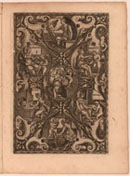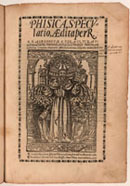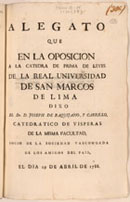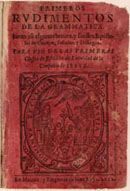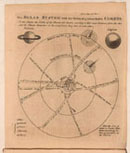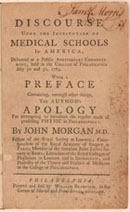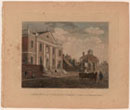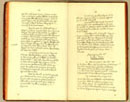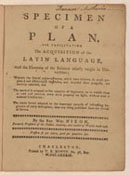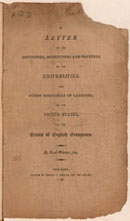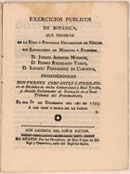 |
||
The foundational area of university study was the liberal arts, which since medieval times had been categorized into seven subjects: the trivium, or grammar, rhetoric, and logic, and the quadrivium, or arithmetic, geometry, music, and astronomy, often supplemented by Aristotelian physics, metaphysics, and moral philosophy. A student who spent seven years studying in the arts faculty could become a Master of Arts, with the right to teach; only four years, and a bachelors degree, were necessary to proceed to advanced training in theology, medicine, or law. Universities were conservative institutions, but curricula evolved. In the Renaissance, courses in logic and philosophy expanded beyond Aristotle to modern authors, while Latin philology and Aristotelean philosophy were supplemented by scriptural study, Hebrew, Greek, and occasionally Arabic and Aramaic. In the eighteenth century, reformers added natural science, modern languages, and history, and state officials promoted subjects vital to modern governments, such as civil engineering, military science, and mining. |
||
The Liberal Arts Diego de Valadés was the son of a conquistador and an indigenous woman from Tlaxcala, Mexico. This book, a theological treatise on the nature and capacities of Native Americans, was the first book by a Mexican Indian or mestizo to be published in Europe. Valadés gives a firsthand account of the evangelization of Mexico and discusses the goal of educating Indians. Richly illustrated, this plate shows the seven liberal arts. |
||
First philosophy course in America Alonso de la Vera Cruz was the first chair of Philosophy at the University of Mexico. Born in Guadalajara, Spain, he studied at the Complutensian University in Alcalá de Henares, and then in Valladolid, with Francisco de Vitoria. He traveled to New Spain where he entered the Augustinian order in 1537. The four works bound together in this volume constitute a complete course in philosophy, the first written and published in America. The annotations are in Vera Cruz’s own hand; the volume once belonged to the Franciscan convent of the Purísima Concepción de Celaya in what is today Guanajuato, Mexico. |
||
Competing for a chair In the Hispanic world, Roman and canon law (or leyes y canones) were the most important and influential part of the university. Colleges in the British colonies, such as Harvard or William and Mary, lacked the superstructure of a university and did not teach law or medicine. In the Spanish colonies, however, the traditional system of teaching law survived to the end of the colonial period: professors holding endowed chairs read aloud the canonical legal compendia and commentaries, explaining them as they went, with the students holding disputations in separate sessions. The First Chair in Roman Law (cátedra de prima de leyes) at the University of Lima was one of the most prestigious positions in the viceroyalty. Candidates competed for it in a public exhibition of their erudition. |
 |
|
First rudiments The Jesuit Congregación de la Anunciata held the monopoly on the production of textbooks for estudios menores, or grammar schools. In 1632, the Congregación published three different collections of Latin excerpts. The Primeros rudamentos shown here is the only known copy of one of these texts, which were often read to death. It includes the first publication of Aesop in America. |
||
Our great Newton
This English textbook of general knowledge drew attention to the modernity of science, noting that the Copernican system "is of late, by our great Newton, establish'd on such clear and solid Principles, that it is now universally receiv'd." It illustrated the moons of Jupiter and Saturn, which had been discovered in the seventeenth century, and calculated that if a cannonball retained its maximum velocity after firing, it would reach the constellation of Sirius, 2.2 billion miles away, in 600,000 years. |
||
First Anglo-American medical school |
||
Surgeons’ Hall On the far side of the imposing Library Company of Philadelphia was the plainer Surgeons’ Hall, the first home of the School of Medicine. It was plain but functional: its large cupola let in sunlight for the operating theater. |
||
Stripped of all the verbiage A plan, never put in effect, for a royal school to be founded in Saint-Domingue with a rigorously modern curriculum. The school was to have eleven levels of instruction from ages nine to nineteen, which combined the most important parts of the traditional liberal arts (“stripped of all the verbiage of the ancient schools”) with writing, drawing, music, dance, and military tactics. |
 |
|
Gathering information |
||
Easy Latin This optimistic pamphlet, which opened with a recommendation from Benjamin Franklin, promised to make college Latin study obsolete. Instead of studying complex grammatical rules, students would learn Latin by one-to-one analogies with English sentences. Theoretically, young boys could learn to read Latin fluently in a few hours. |
||
Obsolete rules Noah Webster’s reform proposals were more convincing than William Nixon’s. He argued that the use of grammatical systems modeled on Latin to describe the English language, and the insistence on preserving obsolete rules, such as the subjunctive voice, made language stiff and artificial. “Instead of teaching what is the real, genuine language, at the time of writing, authors have struggled to preseve the old rules of practice,” he wrote. “Two thirds of all the corruptions in our language have been introduced by learned grammarians.” |
||
Modern botany Carl Linnaeus’s system for classifying plants based on their sexual anatomy revolutionized botany, creating a language of modernity for an area of knowledge that many continued to see through the prism of Aristotle, even in the eighteenth century. To mark the establishment of a research Botanical Garden in Mexico City, new graduates of the Faculty of Medicine took turns publically defending the Linnean system from its detractors. |
||
| To next section, Outsiders and Insiders. | ||
To read the entire scanned book, go to the John Carter Brown Library's Internet Archive book at this link. |
||
| the Exhibition may be seen in the reading room from April 2014 through october 2014. |







